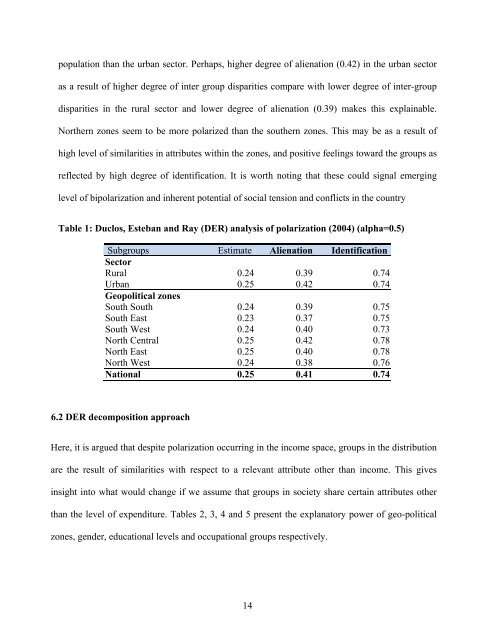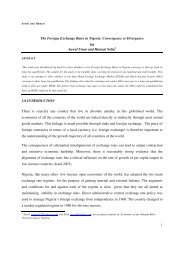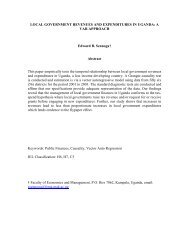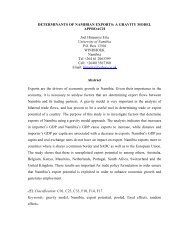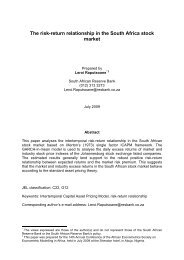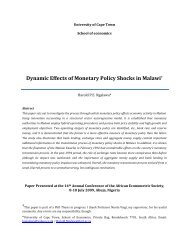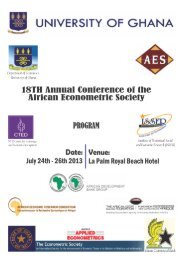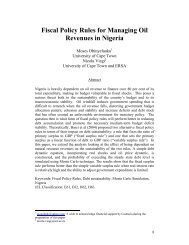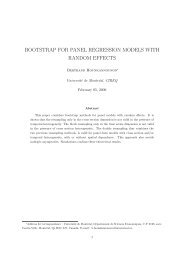Explaining Polarization and its Dimensions in Nigeria - African ...
Explaining Polarization and its Dimensions in Nigeria - African ...
Explaining Polarization and its Dimensions in Nigeria - African ...
Create successful ePaper yourself
Turn your PDF publications into a flip-book with our unique Google optimized e-Paper software.
population than the urban sector. Perhaps, higher degree of alienation (0.42) <strong>in</strong> the urban sector<br />
as a result of higher degree of <strong>in</strong>ter group disparities compare with lower degree of <strong>in</strong>ter-group<br />
disparities <strong>in</strong> the rural sector <strong>and</strong> lower degree of alienation (0.39) makes this expla<strong>in</strong>able.<br />
Northern zones seem to be more polarized than the southern zones. This may be as a result of<br />
high level of similarities <strong>in</strong> attributes with<strong>in</strong> the zones, <strong>and</strong> positive feel<strong>in</strong>gs toward the groups as<br />
reflected by high degree of identification. It is worth not<strong>in</strong>g that these could signal emerg<strong>in</strong>g<br />
level of bipolarization <strong>and</strong> <strong>in</strong>herent potential of social tension <strong>and</strong> conflicts <strong>in</strong> the country<br />
Table 1: Duclos, Esteban <strong>and</strong> Ray (DER) analysis of polarization (2004) (alpha=0.5)<br />
Subgroups Estimate Alienation Identification<br />
Sector<br />
Rural 0.24 0.39 0.74<br />
Urban 0.25 0.42 0.74<br />
Geopolitical zones<br />
South South 0.24 0.39 0.75<br />
South East 0.23 0.37 0.75<br />
South West 0.24 0.40 0.73<br />
North Central 0.25 0.42 0.78<br />
North East 0.25 0.40 0.78<br />
North West 0.24 0.38 0.76<br />
National 0.25 0.41 0.74<br />
6.2 DER decomposition approach<br />
Here, it is argued that despite polarization occurr<strong>in</strong>g <strong>in</strong> the <strong>in</strong>come space, groups <strong>in</strong> the distribution<br />
are the result of similarities with respect to a relevant attribute other than <strong>in</strong>come. This gives<br />
<strong>in</strong>sight <strong>in</strong>to what would change if we assume that groups <strong>in</strong> society share certa<strong>in</strong> attributes other<br />
than the level of expenditure. Tables 2, 3, 4 <strong>and</strong> 5 present the explanatory power of geo-political<br />
zones, gender, educational levels <strong>and</strong> occupational groups respectively.<br />
14


